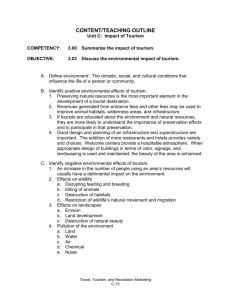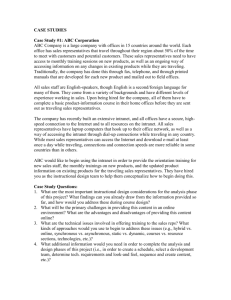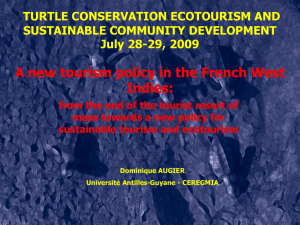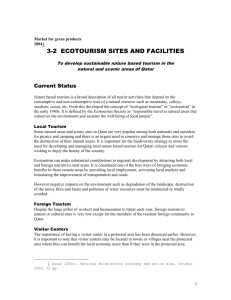Tool How to Conduct Community Mapping
advertisement
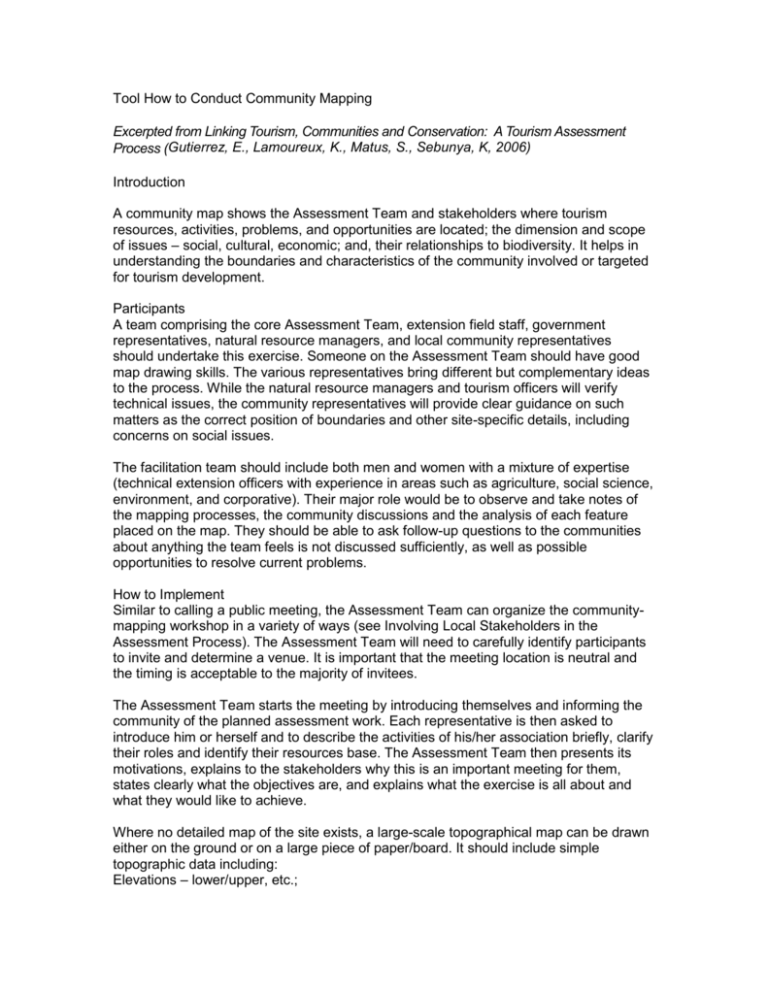
Tool How to Conduct Community Mapping Excerpted from Linking Tourism, Communities and Conservation: A Tourism Assessment Process (Gutierrez, E., Lamoureux, K., Matus, S., Sebunya, K, 2006) Introduction A community map shows the Assessment Team and stakeholders where tourism resources, activities, problems, and opportunities are located; the dimension and scope of issues – social, cultural, economic; and, their relationships to biodiversity. It helps in understanding the boundaries and characteristics of the community involved or targeted for tourism development. Participants A team comprising the core Assessment Team, extension field staff, government representatives, natural resource managers, and local community representatives should undertake this exercise. Someone on the Assessment Team should have good map drawing skills. The various representatives bring different but complementary ideas to the process. While the natural resource managers and tourism officers will verify technical issues, the community representatives will provide clear guidance on such matters as the correct position of boundaries and other site-specific details, including concerns on social issues. The facilitation team should include both men and women with a mixture of expertise (technical extension officers with experience in areas such as agriculture, social science, environment, and corporative). Their major role would be to observe and take notes of the mapping processes, the community discussions and the analysis of each feature placed on the map. They should be able to ask follow-up questions to the communities about anything the team feels is not discussed sufficiently, as well as possible opportunities to resolve current problems. How to Implement Similar to calling a public meeting, the Assessment Team can organize the communitymapping workshop in a variety of ways (see Involving Local Stakeholders in the Assessment Process). The Assessment Team will need to carefully identify participants to invite and determine a venue. It is important that the meeting location is neutral and the timing is acceptable to the majority of invitees. The Assessment Team starts the meeting by introducing themselves and informing the community of the planned assessment work. Each representative is then asked to introduce him or herself and to describe the activities of his/her association briefly, clarify their roles and identify their resources base. The Assessment Team then presents its motivations, explains to the stakeholders why this is an important meeting for them, states clearly what the objectives are, and explains what the exercise is all about and what they would like to achieve. Where no detailed map of the site exists, a large-scale topographical map can be drawn either on the ground or on a large piece of paper/board. It should include simple topographic data including: Elevations – lower/upper, etc.; Simple information on soils; Vegetation; Ecological zones; Water availability; Tourist destination sites; Infrastructure such as roads, schools, health facilities, police posts, etc. Once the main features are in place, a more comprehensive participation of stakeholders can then be conducted. Participants can start filling in gaps in the sketch to identify areas with specific problems such as: Water shortage; Poor soils; Poor vegetation cover; Problem animal areas; Opportunities or potential for development such as infrastructure; Agriculture lands; Community recreational areas; Ecotourism sites; Areas of economic activity i.e. hunting grounds, logging, fishing, gathering areas; Commercial areas; Transportation/access; Future protected area. Recording the Mapping Process The socio-cultural assessment kicks in during the process of drawing and placing resources on the map. Before each resource or item that has been identified is added on the map, it is VERY important for the facilitators to allow 5-10 minutes of discussion. The facilitator’s role is to ask about whatever is being included in the map—how it impacts, benefits, costs, and influences tourism development, and what are the trade-offs. The core team should be taking notes of what different people are presenting as challenges, opportunities, or issues. It is fine to let different people group themselves to discuss an issue while the rest of the group continues with the map; this exercise should not be formal. What is important is that the core team is capturing whatever is being said, as well as observing reactions and emotions from participants on certain important issues. Drawing Conclusions and Recommendations It is these discussions and topics from community representatives that will indicate what people consider socially, economic and environmentally important. The direction of the discussions is significant; even if opinions are sometimes given as facts that cannot be quantified as statistically accurate, they may still show how the community views their situation. The very process of discussing the map items -- location, impact on infrastructure and other services -- will bring out important resource management issues that will help to prepare the village for ecotourism planning. Differences in how different individuals and various community groups perceive conditions in the community are important.








